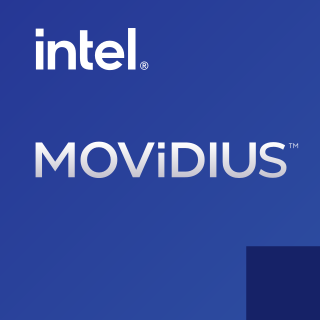
OpenGL is a cross-language, cross-platform application programming interface (API) for rendering 2D and 3D vector graphics. The API is typically used to interact with a graphics processing unit (GPU), to achieve hardware-accelerated rendering.
OpenVG is an API designed for hardware-accelerated 2D vector graphics. Its primary platforms are mobile phones, gaming & media consoles and consumer electronic devices. It was designed to help manufacturers create more attractive user interfaces by offloading computationally intensive graphics processing from the CPU onto a GPU to save energy. The OpenGL ES library provides similar functionality for 3D graphics. OpenVG is managed by the non-profit technology consortium Khronos Group.
OpenMAX, often shortened as "OMX", is a non-proprietary and royalty-free cross-platform set of C-language programming interfaces. It provides abstractions for routines that are especially useful for processing of audio, video, and still images. It is intended for low power and embedded system devices that need to efficiently process large amounts of multimedia data in predictable ways, such as video codecs, graphics libraries, and other functions for video, image, audio, voice and speech.
The Khronos Group, Inc. is an open, non-profit, member-driven consortium of 170 organizations developing, publishing and maintaining royalty-free interoperability standards for 3D graphics, virtual reality, augmented reality, parallel computation, vision acceleration and machine learning. The open standards and associated conformance tests enable software applications and middleware to effectively harness authoring and accelerated playback of dynamic media across a wide variety of platforms and devices. The group is based in Beaverton, Oregon.

OpenGL for Embedded Systems is a subset of the OpenGL computer graphics rendering application programming interface (API) for rendering 2D and 3D computer graphics such as those used by video games, typically hardware-accelerated using a graphics processing unit (GPU). It is designed for embedded systems like smartphones, tablet computers, video game consoles and PDAs. OpenGL ES is the "most widely deployed 3D graphics API in history".
COLLADA is an interchange file format for interactive 3D applications. It is managed by the nonprofit technology consortium, the Khronos Group, and has been adopted by ISO as a publicly available specification, ISO/PAS 17506.
OpenSL ES is a royalty-free, cross-platform, hardware-accelerated, C-language audio API for 2D and 3D audio. It provides access to features such as 3D positional audio and MIDI playback. It is made for developers in the mobile and gaming industry and is working toward allowing for easy porting of applications across multiple platforms.

WebGL is a JavaScript API for rendering interactive 2D and 3D graphics within any compatible web browser without the use of plug-ins. WebGL is fully integrated with other web standards, allowing GPU-accelerated usage of physics and image processing and effects as part of the web page canvas. WebGL elements can be mixed with other HTML elements and composited with other parts of the page or page background.

Standard Portable Intermediate Representation (SPIR) is an intermediate language for parallel compute and graphics by Khronos Group. It is used in multiple execution environments, including the Vulkan graphics API and the OpenCL compute API, to represent a shader or kernel. It is also used as an interchange language for cross compilation.

TensorFlow is a free and open-source software library for machine learning and artificial intelligence. It can be used across a range of tasks but has a particular focus on training and inference of deep neural networks.
The following table compares notable software frameworks, libraries and computer programs for deep learning.

Movidius is a company based in San Mateo, California, that designs low-power processor chips for computer vision. The company was acquired by Intel in September 2016.
An AI accelerator is a class of specialized hardware accelerator or computer system designed to accelerate artificial intelligence and machine learning applications, including artificial neural networks and machine vision. Typical applications include algorithms for robotics, Internet of Things, and other data-intensive or sensor-driven tasks. They are often manycore designs and generally focus on low-precision arithmetic, novel dataflow architectures or in-memory computing capability. As of 2018, a typical AI integrated circuit chip contains billions of MOSFET transistors. A number of vendor-specific terms exist for devices in this category, and it is an emerging technology without a dominant design.

Keras is an open-source library that provides a Python interface for artificial neural networks. Keras acts as an interface for the TensorFlow library.

glTF is a standard file format for three-dimensional scenes and models. A glTF file uses one of two possible file extensions: .gltf (JSON/ASCII) or .glb (binary). Both .gltf and .glb files may reference external binary and texture resources. Alternatively, both formats may be self-contained by directly embedding binary data buffers. An open standard developed and maintained by the Khronos Group, it supports 3D model geometry, appearance, scene graph hierarchy, and animation. It is intended to be a streamlined, interoperable format for the delivery of 3D assets, while minimizing file size and runtime processing by apps. As such, its creators have described it as the "JPEG of 3D."

spaCy is an open-source software library for advanced natural language processing, written in the programming languages Python and Cython. The library is published under the MIT license and its main developers are Matthew Honnibal and Ines Montani, the founders of the software company Explosion.
OpenXR is an open-source, royalty-free standard for access to virtual reality and augmented reality platforms and devices. It is developed by a working group managed by the Khronos Group consortium. OpenXR was announced by the Khronos Group on February 27, 2017, during GDC 2017. A provisional version of the standard was released on March 18, 2019, to enable developers and implementers to provide feedback on it. On July 29, 2019, OpenXR 1.0 was released to the public by Khronos Group at SIGGRAPH 2019.

PyTorch is a machine learning framework based on the Torch library, used for applications such as computer vision and natural language processing, originally developed by Meta AI and now part of the Linux Foundation umbrella. It is free and open-source software released under the modified BSD license. Although the Python interface is more polished and the primary focus of development, PyTorch also has a C++ interface.
The Open Neural Network Exchange (ONNX) [] is an open-source artificial intelligence ecosystem of technology companies and research organizations that establish open standards for representing machine learning algorithms and software tools to promote innovation and collaboration in the AI sector. ONNX is available on GitHub.
OpenVINO toolkit is a free toolkit facilitating the optimization of a deep learning model from a framework and deployment using an inference engine onto Intel hardware. The toolkit has two versions: OpenVINO toolkit, which is supported by open source community and Intel Distribution of OpenVINO toolkit, which is supported by Intel. OpenVINO was developed by Intel. The toolkit is cross-platform and free for use under Apache License version 2.0. The toolkit enables a write-once, deploy-anywhere approach to deep learning deployments on Intel platforms, including CPU, integrated GPU, Intel Movidius VPU, and FPGAs.










